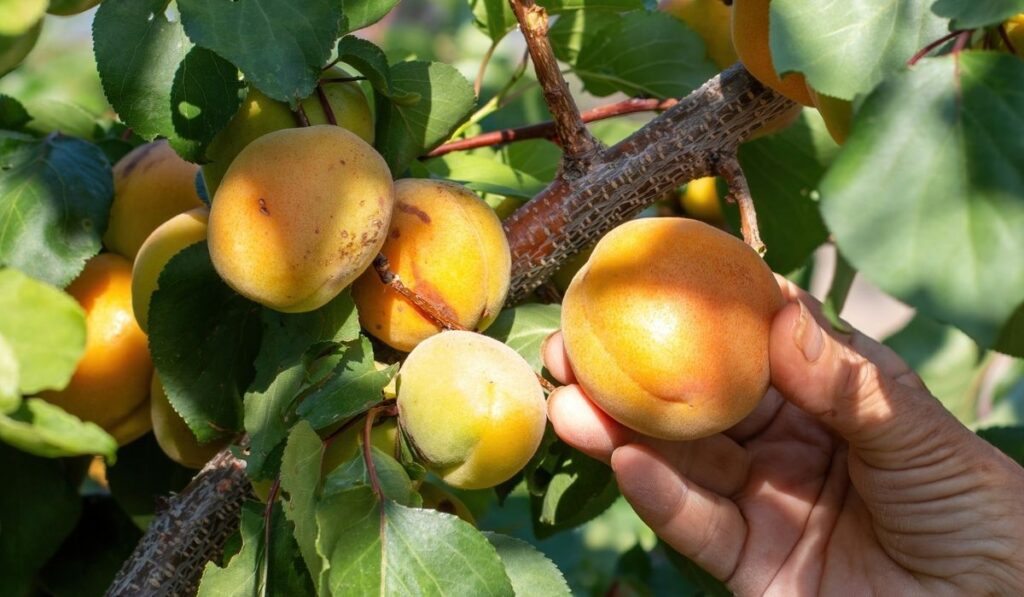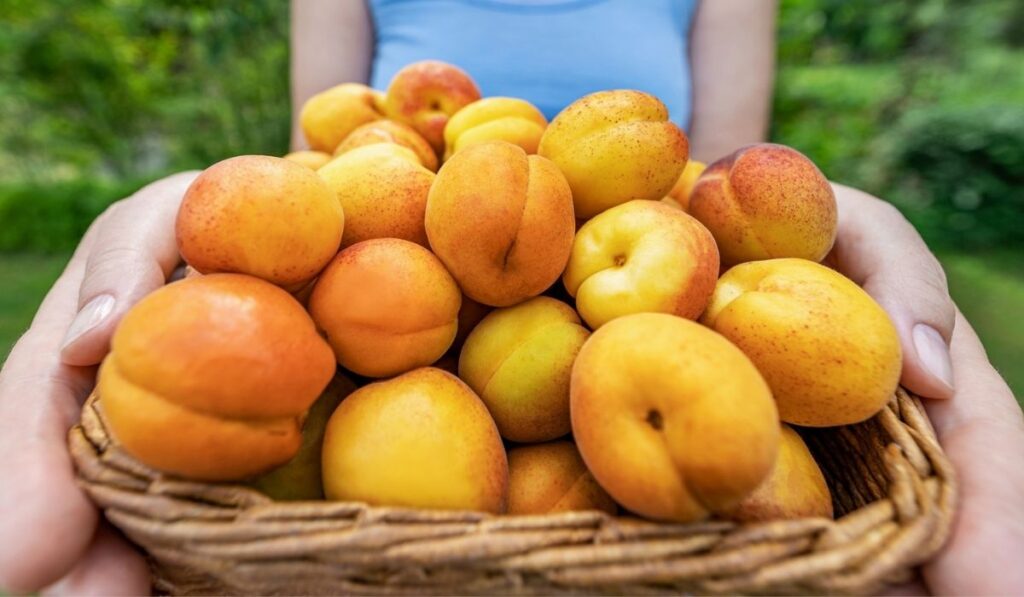Apricots are popular thanks to their sweet flavor and nutrients such as flavonoids, fibers, iron, potassium, and antioxidants, including beta carotene. These stone fruits are perfect as a fresh snack when in season, but they’re also great for roasting, broiling, canning, and making jams/preserves. So, when are apricots in season?
Apricots are in season starting from early May through July in the main growing areas (like California). Other regions have a late apricot season that runs through to August or September. Dried apricots are available all year round, and you can also freeze apricots at home for up to a year.
Apricots are highly perishable, and only a small percentage of the harvest comes to the market fresh — so you really don’t want to miss out on this treat! Let’s learn more about the apricot season, how to buy ripe fruits, and the best storage methods.
When Are Apricots in Season?

If you want to enjoy that tangy sweet flavor of a perfectly ripe apricot, you’ve got to buy them when they’re in season. Apricots bloom early compared to peaches and other stone fruits, and they’re in season from early May through August in North America.
Most apricots in the country come from California, where there’s less risk of frost. Other popular growing areas include Washington and Utah.
Apricots are in season early in California — from early May. That’s when you’ll get the best fruits for your favorite apricot-based recipes. In Washington, the fruits are in season from June to August.
While Michigan doesn’t produce a huge amount of commercial apricots, there are apricots in season there from July to August. Apricots season in Utah, meanwhile, starts later in mid-August and runs through mid-September.
Apricots are in season for a short period, so you’ve got to time your shopping perfectly to enjoy the best of the fruit. While dried apricots are certainly available throughout the year, they don’t have the same juiciness or fresh flavor you get from a just-picked fruit.
If your recipe requires fresh apricots, check where your local markets get their fruits and be ready to shop when the apricots are in season. And if you find yourself outside of the main growing season, be sure to consider some shelf-stable options like Dried Turkish Apricots (on Amazon), or even Sun-Maid Dried Mediterranean Apricots (also on Amazon).
How to Know When an Apricot Is Ripe
If you’re shopping for fresh apricots in season, you’ll want to make sure you choose a ripe bunch. Unripe apricots have a sour taste that could ruin your recipe and disappoint your taste buds.
Here are some tips to help you figure out when an apricot is ripe:
- Choose apricots with a golden, orange color.
- Pick plump and firm apricots with a soft feel.
- Pick fruits with a sweet and floral fragrance.
- Don’t pick apricots that are too squishy; these are overripe.
You can eat apricots just as they are or use the plump, juicy flesh in other ways, including in salads, cakes, and scones. Other applications for ripe apricots include apricot cake, swirl cheesecake, apricot scones, smoothies, and many other creative and delicious recipes.
Luckily, apricots ripen even after harvesting. Once you buy the fruits, leave them on the counter or in a paper bag and allow them to ripen fully.
How to Store Apricots

Since apricots are in season for such a short period, you should learn how to properly store them for later use. Fresh apricots can only last a few days out on the counter.
Whether you want to store the sweet fruits for a few weeks or for use during the winter, here are some storage tips to keep in miind:
- Start by picking ripe apricots for storage. If you’ve bought green apricots, wait for them to ripen at room temperature until they turn golden orange and become a little soft to touch. Place the ripening fruits away from direct sunlight.
- Refrigerate ripe apricots that you intend to use within a few days. The cold temperature might change their taste/texture, so try to use them quickly in order to get the desired taste in your recipes.
- Freeze your ripe apricots for up to three months by storing them in airtight bags.
- For longer-term storage of up to one year, pack the ripe apricots in syrup or sugar.
- Store dried apricots in containers or airtight bags in the refrigerator.
Freezing apricots allows you to enjoy delicious smoothies, fruit leather, jam, and other apricot-inspired recipes long after the apricot season is over.
